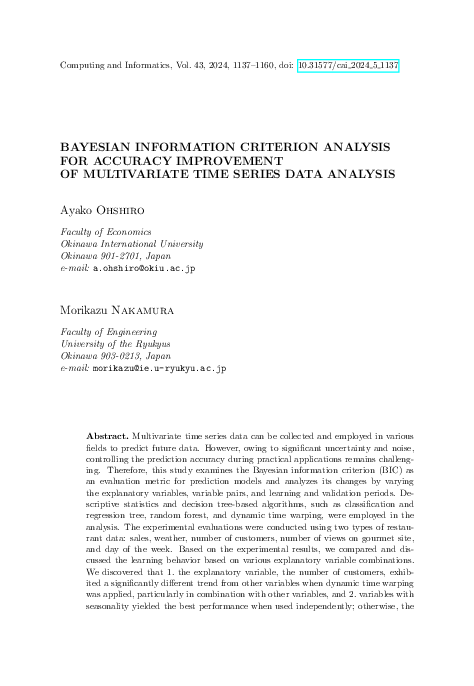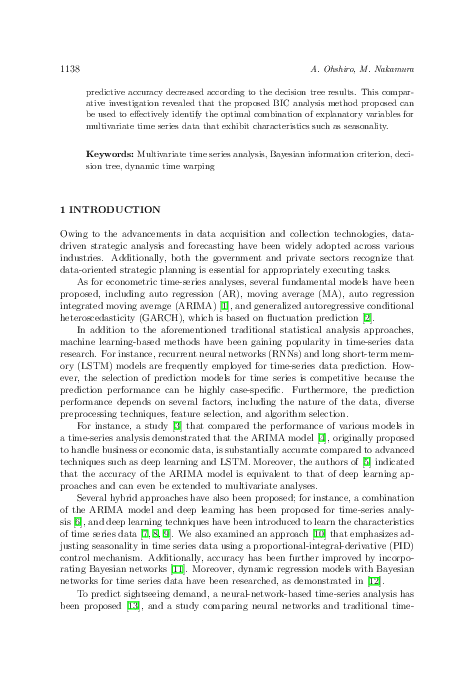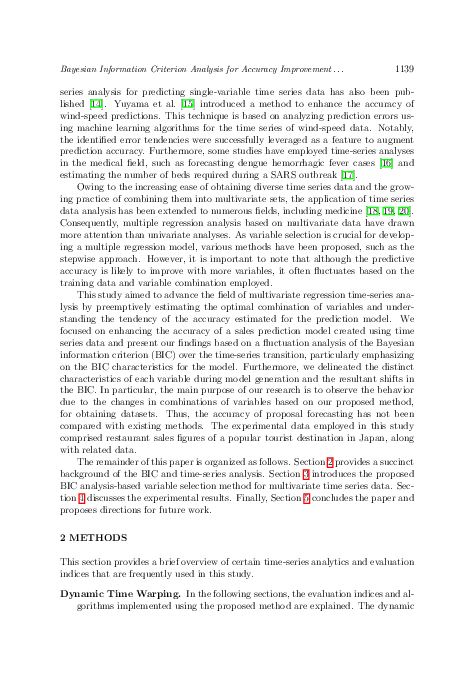Bayesian Information Criterion Analysis for Accuracy Improvement of Multivariate Time Series Data Analysis
keywords: Multivariate time series analysis, Bayesian information criterion, decision tree, dynamic time warping
Multivariate time series data can be collected and employed in various fields to predict future data. However, owing to significant uncertainty and noise, controlling the prediction accuracy during practical applications remains challenging. Therefore, this study examines the Bayesian information criterion (BIC) as an evaluation metric for prediction models and analyzes its changes by varying the explanatory variables, variable pairs, and learning and validation periods. Descriptive statistics and decision tree-based algorithms, such as classification and regression tree, random forest, and dynamic time warping, were employed in the analysis. The experimental evaluations were conducted using two types of restaurant data: sales, weather, number of customers, number of views on gourmet site, and day of the week. Based on the experimental results, we compared and discussed the learning behavior based on various explanatory variable combinations. We discovered that 1. the explanatory variable, the number of customers, exhibited a significantly different trend from other variables when dynamic time warping was applied, particularly in combination with other variables, and 2. variables with seasonality yielded the best performance when used independently; otherwise, the predictive accuracy decreased according to the decision tree results. This comparative investigation revealed that the proposed BIC analysis method proposed can be used to effectively identify the optimal combination of explanatory variables for multivariate time series data that exhibit characteristics such as seasonality.
reference: Vol. 43, 2024, No. 5, pp. 1137–1160


